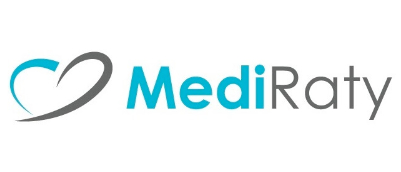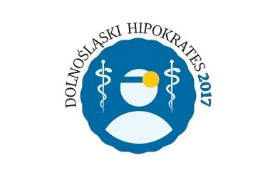Where do malocclusions come from?
Malocclusion or misaligned teeth can be:
- inherited,
- acquired,
- may be a combination of genetic and environmental factors.
Genetic defects include prognathism (a strongly developed mandible), which can be seen in portraits of rulers from the Habsburg dynasty. Another example of a hereditary defect is diastema (gap between the upper incisors).
Many factors may contribute to the development of acquired malocclusion, such as incorrect positioning during infancy (e.g. too high pillow), use of improperly shaped pacifiers for feeding, practicing harmful habits in childhood (e.g. pacifier sucking, finger sucking, mouth breathing), significant destruction by caries or premature loss of milk teeth.
We should also remember about evolutionary changes, which scientists attribute to crowding - change of lifestyle, eating more and more processed and soft food means that the dental arches of modern man are not as wide as those of our ancestors. This results in a lack of space for the teeth, which is manifested by crowding.

Does every misaligned tooth require orthodontic intervention?
No. However, any malocclusion is worth consulting with an orthodontist.
It is estimated that only about 20-30% of people have a normal occlusion. The remaining people have various abnormalities in the position of their teeth that are a symptom of a more or less serious malocclusion. Some of these defects may result in problems with crushing food, articulation of certain sounds (speech defects), and with age, overload of teeth and their early loss.
Other defects are only an aesthetic defect and do not affect the dental and periodontal health. To be sure, whether orthodontic treatment is necessary, or only recommended, it is best to come for a consultation.
Is it worth to “straighten your teeth”?
Yes, it is. Both in children and in adults. The most common reason for visiting an orthodontist is dissatisfaction with the appearance of one’s smile. Crooked teeth are often the cause of ridicule among children and adolescents, which affects self-esteem and acceptance in the peer group.
Even in later life, an unattractive smile can have an impact on self-esteem and confidence. It has been proven that people who are perceived as pretty and attractive are subconsciously attributed more positive traits and are trusted more before we get to know them. In today’s world people attach great importance to taking care of themselves. This is reflected in the concern for a rational diet, practicing sports, as well as taking care of one’s own appearance.
Orthodontic treatment has become more and more widely accepted in recent years, because it is rightly treated as an expression of care for one’s health and image.
Of course, as long as a malocclusion remains only an aesthetic defect, the decision to correct it depends primarily on how much it bothers our smile. For many defects, however, the problem is not just aesthetic. Improving the alignment of the teeth may often reduce the risk of trauma (especially in children with “protruding” upper incisors), eliminate tooth overload (which may lead to their earlier loss), improve the function of biting and chewing food, facilitate tooth cleaning (especially in the case of severe crowding), facilitate the performance of prosthetic restorations.
What is a suitable age to decide on orthodontic treatment?
In modern orthodontics, there are almost no age restrictions.
Orthodontic treatment may be started at any age. The prerequisite (apart from the malocclusion) is the presence of healthy teeth and periodontal tissues. The time when the treatment starts depends mainly on the type of malocclusion.
For some defects, orthodontic therapy is necessary from early childhood until complete growth.
In other cases, the malocclusion is somewhat self-regulating with growth and development, and too early treatment is not justified.
However, as in other areas of medicine, it is better to prevent a problem than to treat it later. Many defects start with incorrect habits in infancy, such as sucking on a pacifier, sucking on a finger or biting on a lip. With the help of special vestibular screens, such habits can be discouraged. Most malocclusions appear in children and adolescents in the period of replacing deciduous teeth with permanent ones. Orthodontic therapy in this period usually provides more opportunities compared to the treatment of adults and allows the use of growth potential and the possibility of orthopedic action (e.g. influence the direction of bone growth).
Conducting orthodontic treatment in adults is often a more complicated process, requiring different treatment planning, often cooperation with other specialists (periodontist, prosthodontist) and acceptance of certain therapeutic compromises by the patient.
Nevertheless, orthodontic treatment of adults is, of course, possible and nowadays more and more popular, and the joy of an adult patient with a dream “pretty smile” is often greater than the joy of a teenager.
Which orthodontic appliances to choose?
When thinking about orthodontic treatment, patients usually distinguish between two types of braces: fixed braces (attached to the teeth) and removable braces (usually associated with the treatment of children). In fact, these are not two types, but two groups of braces used by orthodontists.
Removable braces are most commonly used for children during the period of teeth replacement. They are designed and made individually for each patient. These braces are often mistakenly treated as inferior to permanent ones - a common opinion is that they should be worn only at night, that children don’t want to wear them and that permanent braces will be necessary in the end anyway. In fact, removable braces are not a replacement for permanent braces, but a supplement to them. They are often recommended in the first stage of treatment when it is not yet possible to apply permanent appliances due to ongoing replacement of teeth, but at the same time the young age of the patient allows for orthopedic measures such as widening the dental arch to avoid the need to remove permanent teeth in the future due to crowding.

Fixed braces are probably the most commonly associated by patients with modern orthodontics. These braces consist of brackets glued to teeth, an arch attached to them and additional elements. The brackets in these braces are metal (also in a nickel-free version for allergy sufferers) or “aesthetic” (transparent or in a color similar to the color of the tooth). There are various types of fixed appliances available on the market, offered by different manufacturers. It should be remembered that the choice of a given bracket system depends on the dentist (the patient is left to decide whether they prefer braces with metal or “aesthetic” brackets) because braces are only a tool and, similarly to surgical tools, without the dentist’s involvement they will not cure the patient.

Moreover, contrary to what some manufacturers claim, there is no such thing as a perfect appliance for every defect. Therefore, it is necessary to adjust the appliance to the given clinical situation. Often the treatment with fixed braces involves the use of additional elements or appliances (e.g. for widening the dental arch or advancement of the mandible).








 English (GB)
English (GB) 
